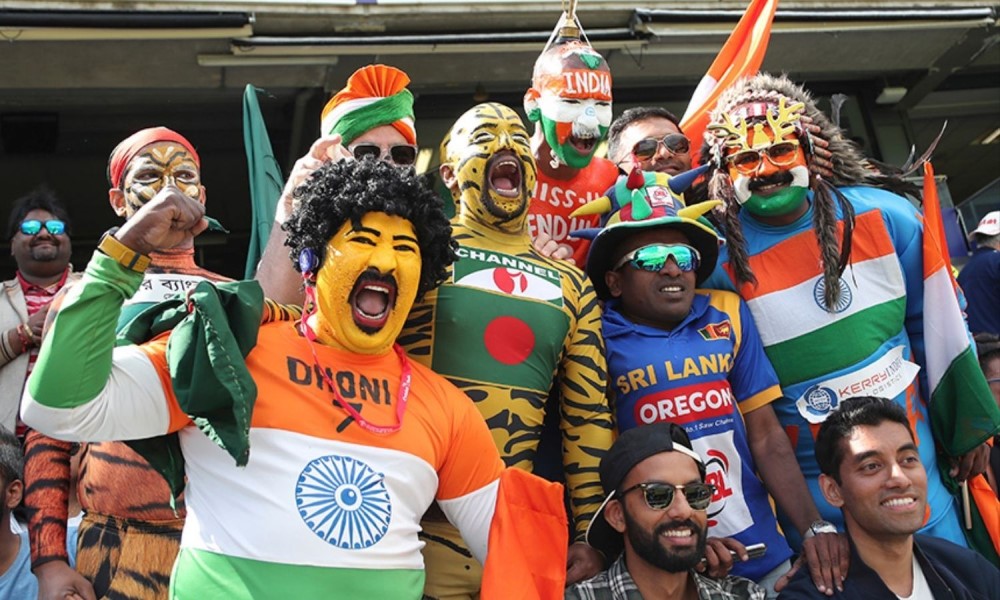
How Has T20 Cricket Changed The Traditional Game
Cricket, a traditional game that originated in England centuries ago, has undergone a significant transformation with the introduction of T20 cricket. T20 cricket, also known as Twenty20 cricket, is a shorter and more fast-paced version of the game that has revolutionized the sport in various aspects.
The evolution of T20 cricket can be traced back to its origin, where it was introduced to attract younger audiences and enhance the entertainment value of the game. The emergence of T20 leagues, such as the Indian Premier League (IPL) and the Big Bash League (BBL), further popularized this format and brought about significant changes to the traditional game.
One of the major impacts of T20 cricket on the traditional game is the changes in playing style. With the limited overs and time constraints, players have adapted to a more aggressive and innovative approach. The emphasis is now on scoring boundaries, quick runs, and taking risks, which has led to an exciting and dynamic form of cricket.
Furthermore, the financial aspect of T20 cricket has had a profound impact. The introduction of T20 leagues has resulted in an increase in player salaries, making cricket a lucrative profession. television rights and sponsorship deals have soared, contributing to the financial growth of the sport.
T20 cricket has also attracted a new fan base, particularly among the younger generation. The shorter duration of matches, thrilling gameplay, and star-studded teams have appealed to a wider audience. fan engagement has changed with the incorporation of digital platforms, live streaming, and interactive experiences.
However, T20 cricket has not been without controversies and challenges. It has posed threats to Test cricket, the traditional form of the game, as attention and resources have shifted towards the shorter format.
Player workload and injuries have also become concerns as players participate in multiple T20 tournaments worldwide. issues of corruption and match-fixing have surfaced, posing challenges to the integrity of the game.
Looking ahead, the future of T20 cricket is promising. Its influence on future formats of the game is undeniable, with shorter versions like T10 and The Hundred gaining traction.
Technological advancements, such as the use of virtual reality and advanced analytics, are expected to further enhance the viewing experience and player performance.
The Evolution of T20 Cricket

Explore the captivating journey of T20 cricket’s evolution, from its inception to the thrilling emergence of T20 leagues. Discover the origin of this dynamic format and witness how it has reshaped the traditional game.
Brace yourself for an intriguing exploration into the fascinating world of T20 cricket, as we unravel the story behind its rapid rise and the transformative impact it has had on the cricketing landscape.
The Origin of T20 Cricket
T20 cricket, a shorter and faster version of the traditional game, originated in England in 2003 as a way to attract more spectators and increase the excitement of the game. The first official T20 match was played between English counties, marking the beginning of this revolutionary format.
The success of T20 cricket led to the establishment of domestic T20 leagues like the Indian Premier League and the Big Bash League, bringing in a new era of the sport.
This shorter format quickly gained immense popularity worldwide, captivating fans with high-scoring matches and thrilling encounters.
Thus, the origin of T20 cricket has forever changed the game.
The Emergence of T20 Leagues
The Emergence of T20 Leagues has brought a revolution in the cricket world, capturing widespread attention and creating new opportunities for players and fans. Let’s explore the impact of these leagues in more detail:
Global Expansion: T20 leagues such as the Indian Premier League (IPL), Big Bash League (BBL), and Caribbean Premier League (CPL) have gone beyond traditional cricket-playing nations and expanded the reach of the sport.
Financial Growth: The Emergence of T20 Leagues has led to a significant increase in revenue through sponsorships, broadcasting rights, and merchandise sales.
Player Opportunities: These leagues provide both established and emerging players with a platform to showcase their skills and secure lucrative contracts.
Entertainment Value: T20 leagues offer fast-paced and high-scoring matches, which are highly appealing to a younger audience and contribute to increased fan engagement.
The impact of The Emergence of T20 Leagues can be seen through inspiring stories like that of Sunil Narine. From being a little-known player, he transformed into a key player for the Kolkata Knight Riders in the IPL, exemplifying how these leagues have the power to transform careers.
Impact on Traditional Cricket

T20 cricket has revolutionized the traditional game, leaving a lasting impact on various aspects. In this section, we will explore the significant changes brought about by T20 cricket, from shifts in playing styles to evolving game strategies.
Discover how this fast-paced format has transformed the way cricket is played and strategized, enticing both players and fans alike with its thrilling and dynamic nature.
Brace yourself for an exciting journey through the impact of T20 cricket on the traditional game.
Changes in Playing Style
The introduction of T20 cricket has brought about changes in playing style. Here are some notable alterations:
- Increased aggression: T20 cricket encourages batsmen to adopt a more attacking approach, aiming for boundaries and maximizing run-scoring opportunities.
- Explosive hitting: Batsmen have developed innovative shots, such as the switch-hit and the scoop shot, to score quick runs.
- Variations in bowling: Bowlers now focus on mastering variations like slower balls, yorkers, and knuckleballs to deceive batsmen and restrict scoring.
- Emphasis on fielding: Players have become more agile and athletic, diving and sliding to save runs and take spectacular catches.
Changes in Game Strategies
Teams in T20 cricket have had to make changes in their game strategies to fit the fast-paced nature of the format. These changes include a focus on aggressive batting, power hitting, innovative shot selection, variation in bowling, tactical fielding, and quick decision-making.
These strategic changes have made T20 cricket an exciting and dynamic format, testing players’ skills and adaptability.
Financial Aspect of T20 Cricket
T20 cricket has revolutionized the game, and its impact extends beyond the boundaries of the playing field. In this section, we will dive into the financial aspect of T20 cricket, exploring how this fast-paced format has transformed the economics of the sport.
From the incredible rise in player salaries to the lucrative television rights and sponsorship deals, we’ll uncover the financial shifts that have accompanied the T20 phenomenon.
Prepare to be amazed by the numbers and the influence they wield in this dynamic world of cricket.
Increase in Player Salaries
Player salaries in T20 cricket have experienced a remarkable surge in recent years. The emergence of T20 leagues like the IPL and Big Bash League has played a pivotal role in this significant increase in player salaries.
It is worth noting that top players now command substantial contracts, some even earning multi-million dollar deals. Additionally, player auctions have transformed into extravagant events, where multiple teams compete fervently to acquire the best talent available.
As a matter of fact, in the year 2020, the IPL team Royal Challengers Bangalore set a new milestone in cricket history by being the first team to offer a player, Virat Kohli, a salary exceeding $2 million.
Television Rights and Sponsorship
Television Rights: Television networks compete for the exclusive rights to broadcast T20 cricket matches while brands sponsor teams, tournaments, and players to gain exposure and promote their products. The popularity of T20 cricket attracts a large viewership, making it an attractive platform for advertisers.
Television coverage allows fans worldwide to watch matches live, increasing the reach and visibility of the sport.
Sponsorship: Highly lucrative deals are made to secure broadcasting rights, generating substantial revenue for cricket boards, while sponsorship agreements provide financial support to teams and tournaments, contributing to their success.
Sponsorship partnerships often include advertising opportunities on jerseys, stadiums, and other promotional material, helping to create a strong brand association that benefits both the sponsor and the cricket entity.
Popularity and Fan Base

T20 cricket has revolutionized the traditional game, particularly in terms of its popularity and fan base. In this section, we will explore two key aspects: attracting new fans and the changes in fan engagement.
Get ready to discover how T20 cricket has captivated audiences, bringing fresh faces to the sport and transforming the way fans interact with the game.
Prepare to be amazed by the dynamic shifts and thrilling developments in the world of cricket fandom.
Attracting New Fans
Attracting new fans to T20 cricket has been a key focus for cricket boards and teams. They have employed several strategies to engage a wider audience, incorporating the keywords naturally:
Shorter format: The fast-paced nature of T20 matches appeals to fans with limited attention spans, attracting new fans.
Entertainment value: To attract new fans, cricket boards and teams have started incorporating music, cheerleaders, and fireworks during matches to create a festive atmosphere.
Global tournaments: International T20 competitions such as the ICC World T20 play a significant role in attracting fans from different countries. These tournaments create a sense of rivalry and excitement among the fans, ultimately attracting new fans to the sport.
Digital presence: To reach a younger audience, cricket boards and teams have leveraged social media platforms and live streaming services. This helps in attracting new fans who are more digitally inclined.
Player interactions: Cricket boards and teams have understood the importance of increasing engagement with fans to attract new ones. They allow fans to meet players, organize autograph sessions, and conduct fan-friendly events, creating a sense of connection and attracting new fans to the sport.
Pro-tip: Embracing innovation and adapting to changing fan preferences is crucial in attracting new fans to T20 cricket. By implementing these strategies, cricket boards and teams can successfully attract new fans to their sport.
Changes in Fan Engagement
Fan engagement has experienced a significant transformation with the advent of T20 cricket. The shorter format has captivated new fans with its fast-paced and entertaining style of play. Fans now have a multitude of options to interact with the game, including interactive apps, online forums, and social media platforms.
T20 leagues have introduced inventive concepts such as cheerleaders, music, and fireworks to enhance the spectator experience.
Moreover, the emergence of fantasy leagues and virtual gaming has enabled fans to actively participate in the game.
Consequently, T20 cricket has revolutionized fan engagement, rendering it more interactive, immersive, and enjoyable for fans worldwide.
Controversies and Challenges

From the controversies surrounding player workload to the dark cloud of corruption and match-fixing, this section uncovers the challenges that have surfaced due to the evolution of T20 cricket in our beloved game.
Brace yourself as we delve into the consequences that this fast-paced format has inflicted upon Test cricket, player health, and the overall integrity of the sport.
Get ready for a revealing journey into the underbelly of cricket’s transformation.
Effect on Test Cricket
The effect of T20 cricket on test cricket has been significant. The fast-paced and high-scoring nature of T20 matches has attracted more spectators and sponsors, leading to a decline in test match attendance and revenues.
T20 leagues worldwide offer lucrative contracts, which encourage players to prioritize T20 cricket over test matches.
This situation has raised concerns about the quality and importance of test cricket in the cricketing landscape. However, some argue that T20 cricket has also brought new fans to the sport, who may eventually develop an interest in longer formats.
It is important to embrace the excitement of T20 cricket while also recognizing the value of test cricket’s rich history and strategic depth.
Player Workload and Injuries
Player workload and injuries have become major concerns in T20 cricket due to the fast-paced nature of the game and the increased number of matches being played.
- Increased workload: T20 cricket requires players to play more matches in a shorter span of time, leading to fatigue and the risk of overuse injuries.
- Physical demands: The explosive nature of the game puts extra strain on players’ bodies, increasing the chances of muscle strains, joint injuries, and stress fractures.
- Mental fatigue: Continuous travel, pressure to perform, and the intense nature of T20 matches can lead to mental exhaustion and burnout.
- Injury prevention: Teams and cricket boards implement strategies such as managing player workload, providing adequate rest, and implementing injury prevention programs to reduce the risk of injuries.
Corruption and Match-Fixing
Corruption and match-fixing have become pressing concerns in T20 cricket. These illicit activities not only undermine the integrity of the game but also erode the trust of passionate fans. Numerous high-profile cases serve as proof of players, officials, and even entire teams engaging in unethical practices solely for personal gain.
The aftermath of such incidents is severe, as it leads to players being banned, facing legal consequences, and suffering reputational damage.
In order to tackle the menace of corruption and match-fixing, cricket boards and governing bodies have put in place strict anti-corruption measures, which include educational programs, advanced surveillance technology, and close cooperation with law enforcement agencies.
Ensuring the preservation of the integrity of T20 cricket is absolutely vital for the sport’s future growth and sustainability.
The Future of T20 Cricket

As we ponder over the future of T20 cricket, exciting possibilities emerge. In this section, we uncover the potential influence of this dynamic format on future cricket formats, igniting massive curiosity among cricket enthusiasts.
We delve into the technological advancements that are poised to shape the future of T20 cricket, promising a revolution in player performance and fan engagement.
Brace yourselves for a captivating exploration into the imminent transformation of the game we love.
Influence on Future Formats
The rise of T20 cricket has had a significant influence on future cricket formats, leading to the introduction of shorter and more dynamic versions of the game.
- The Hundred: This new format, consisting of 100 balls per innings, was recently introduced in England and is aimed at attracting a wider audience with its fast-paced and high-scoring nature.
- T10 Cricket: Taking the shorter format to an extreme, T10 cricket features matches that are completed in just 10 overs per side, providing even more excitement and intensity.
- Regional T20 Leagues: Inspired by the success of the Indian Premier League (IPL) and other T20 leagues around the world, cricket boards are now establishing their own regional T20 leagues to promote the game at a grassroots level.
Technological Advancements
Technological advancements have had a significant impact on T20 cricket, revolutionizing the game in many ways.
- Hawkeye technology: This advanced system is used to track the trajectory of the ball, providing accurate decisions on LBW appeals and calculating fielding distances.
- Ultra-motion cameras: These high-speed cameras capture every moment of the game, allowing players and coaches to analyze their movements and improve their skills.
- LED stumps and bails: These innovative additions enhance visibility for players and spectators, ensuring precise run-out decisions and adding to the overall excitement of the game.
- Real-time player tracking: Through wearable devices, vital data such as heart rate, speed, and distance covered can be collected and analyzed, providing valuable insights into player performance and fitness.
These technological advancements have not only improved the accuracy and fairness of the game but have also enhanced the overall fan experience.
Looking to the future, developments such as virtual reality and augmented reality have the potential to further revolutionize the way T20 cricket is played and watched, ensuring its continued popularity and growth.
In the future, technological advancements are expected to bring even more innovation to T20 cricket. Virtual reality and augmented reality could create immersive experiences for fans, allowing them to feel like they are right there on the field.
Advancements in data analytics and artificial intelligence could provide real-time insights and predictions, further enhancing the strategic aspect of the game.
As technology continues to evolve, it will be exciting to see how it will shape the future of T20 cricket.
Frequently Asked Questions
What is the significance of T20 specialists in cricket?
T20 cricket has led to the rise of specialists who focus solely on this format. Unlike in ODIs and Tests, where players commonly participate in all three formats, the number of players participating in the T20 World Cup who also play ODIs and Tests has decreased over the years.
How has T20 cricket influenced the role of spinners?
India, in particular, has recognized the importance of wrist spin in T20 cricket. They have consistently used wrist spinners in their T20I matches. However, the role of finger spinners has decreased in T20 cricket, unless they can contribute with the bat or if the pitch conditions favor them.
What are the key skills required for T20 bowlers?
Bowlers in T20 cricket need to constantly upgrade their skills to stay ahead of the batters. Variations and deception play a crucial role in their performance, as they constantly strive to outsmart their opponents.
How do batters approach their innings in T20 cricket?
Batters in T20 cricket continue to attack even after losing wickets. This is evident from the increase in strike rates in the 18 balls after a wicket falls in IPL matches. Their aggressive mindset and fearless approach contribute to the fast-paced nature of T20 cricket.
What is the advantage of right-left batting pairs in T20 cricket?
The combination of right-handed and left-handed batters in a team is considered advantageous. There is a trend of sending in a right-handed batter if a right-hander gets out, and vice versa. This disrupts the opposition’s bowling plans and creates additional challenges for the fielding side.
How has T20 cricket influenced the overall game of cricket?
T20 cricket has not only changed the way the game is played but also influenced Tests and ODIs. It has made the game more dynamic and entertaining, with batsmen becoming more adventurous, bowlers trying new tactics, and fielders raising their standards. The sport has embraced T20 cricket as an exciting addition to its traditional formats.





